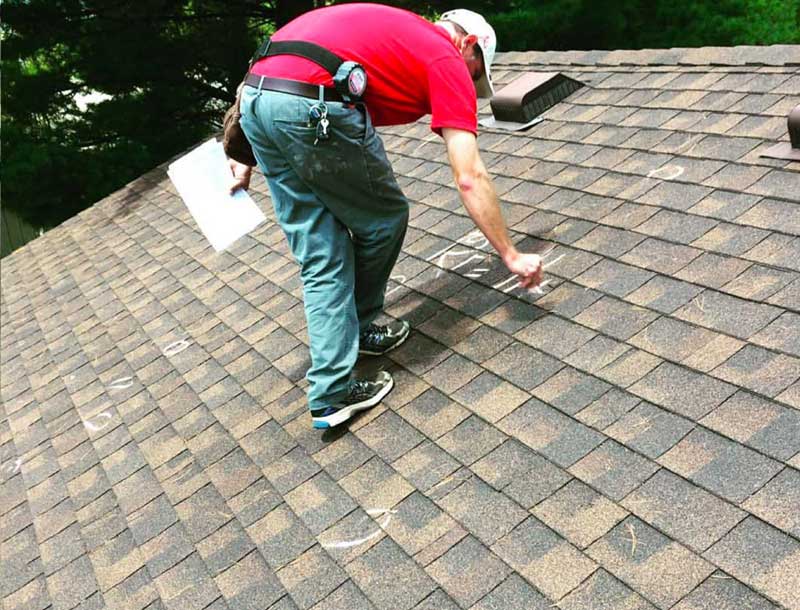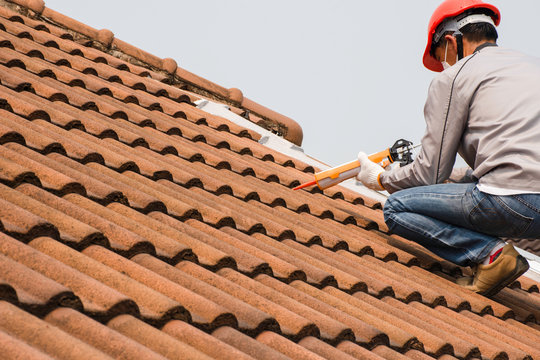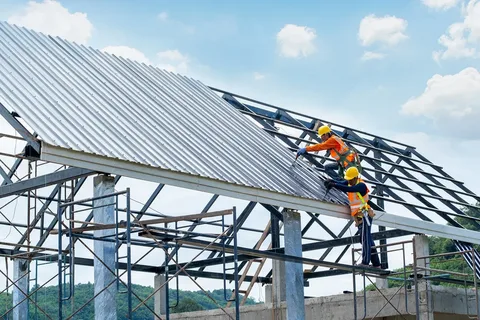Find out how spring floods can hurt your roof and learn easy ways to protect your New York home.
Introduction
Spring is a beautiful season, but it also brings flooding risks to homes in New York. The combination of melting snow, heavy rainfall, and rising water levels can cause significant damage to your roof and home’s structure. 🌧️
In this article, we will explore how spring floods impact roofs and what steps homeowners can take to protect their homes and prevent costly damage. We will also look at common issues caused by flooding and how you can ensure your roof withstands the rainy season.
1. Understanding Spring Flood Risks in New York
Spring flooding is an annual occurrence in New York, particularly in areas that experience significant snowmelt and heavy rainfall. The risk of flooding is heightened by a combination of factors, including:
- Heavy Rainfall: April and May are the wettest months in New York, with average rainfall totals of over 90mm per month. The deluge of rain can overwhelm gutters, downspouts, and drainage systems, causing water to pool on the roof.
- Snowmelt: As the snow from winter melts, the water needs a place to drain. If your roof and gutters are clogged or damaged, the meltwater can pool, leading to leaks or flooding inside the home.
- Rising Water Tables: In areas near rivers and streams, rising water levels can lead to flooding that infiltrates basements and lower levels of homes, damaging roofs as water seeps in.
2. Common Types of Roof Damage from Spring Flooding
When spring floods occur, the resulting water damage can have a lasting impact on your roof. Here are some of the most common issues caused by flooding:
Clogged Gutters and Downspouts
Flooding often happens when gutters become clogged with debris such as leaves, branches, and dirt. When gutters are blocked, water can’t drain properly, leading to overflow that runs down the side of your home and pools around the foundation. This water buildup can also seep under shingles and into the home, leading to leaks and mold growth inside.
Water Intrusion and Leaks
As water seeps under damaged shingles or through compromised roof flashing, it can lead to roof leaks. These leaks can cause damage to the interior of your home, including ceilings, walls, and electrical systems. If water pools for extended periods, it can also damage the roof’s underlying structure, causing rot and weakening the integrity of the materials.
Roof Rot and Mold Growth
Standing water on your roof can encourage mold and mildew growth, particularly on roofs with organic materials like wood or shingles. Mold can compromise the structural integrity of your roof, and it’s a significant health hazard if it spreads inside your home.
Damage to Flashing and Seals
Floodwater can erode or compromise the flashing around chimneys, vents, and skylights, leading to water seepage. When these areas are not adequately sealed, water can infiltrate your roof and cause significant damage over time.
3. Signs of Roof Damage After Spring Flooding
If you suspect that your home has been affected by spring flooding, there are some key signs to look for to evaluate the damage:
Water Stains on the Ceiling or Walls
If you see water stains or notice dampness on your ceiling or walls, it could indicate a leak from the roof. Stains typically appear in areas near windows, vents, or chimneys, where the roof might have been compromised by flooding.
Sagging Roof Decks
Floodwater can cause the roof structure to become waterlogged, which may lead to sagging. If you notice that your roof is sagging in certain areas, this is a sign of severe water damage and should be addressed immediately.
Visible Mold or Mildew 🦠
Mold or mildew growth is a clear sign that moisture has infiltrated the roof. If you notice black spots on your ceiling or walls, this is often a result of flooding and water damage.
Damaged Flashing or Shingles
Inspect the roof for any missing shingles or damaged flashing. Flashing around chimneys and vents can deteriorate over time, allowing water to seep in.
4. Preventive Measures to Protect Your Roof from Spring Floods
Taking preventive steps before and during the spring season can save you from the expensive costs associated with flood damage. Here’s how you can protect your roof and home:
1. Inspect and Clean Gutters Regularly 🧹
Ensure your gutters are free from debris and properly functioning. Clogged gutters are the leading cause of water buildup and subsequent roof damage. Clean your gutters at least twice a year, or more frequently during the fall and spring.
- Tip: Install gutter guards to reduce the buildup of debris.
2. Check for Leaks and Seal Vulnerable Areas
Before the rainy season begins, inspect your roof for any cracks, gaps, or missing shingles. Pay close attention to roof flashing around chimneys, vents, and skylights, as these are vulnerable areas prone to leaks during flooding.
- Tip: Apply roof sealant to vulnerable areas to prevent water infiltration.
3. Maintain Proper Attic Ventilation 🌬️
Proper attic ventilation helps control the temperature and moisture inside the attic. Without adequate ventilation, your attic can become a hotspot for condensation, which can lead to mold and water damage. Ensure that your attic is well-ventilated to reduce humidity levels and allow the roof to dry properly.
4. Improve Drainage Systems 🌧️
Make sure your downspouts and drainage systems are clear and positioned properly to direct water away from your home. Poor drainage can cause water to pool around the foundation and seep into the roof structure.
- Tip: Install a French drain system to channel water away from the foundation of your home.
5. Reinforce the Roof Structure
For older homes, consider reinforcing your roof with structural support to handle the weight of accumulated water during floods. This might include installing additional supports or replacing damaged sections of the roof structure.
5. What to Do If Your Roof Has Been Damaged by Spring Flooding
If your roof has sustained damage from spring floods, it’s crucial to take quick action to minimize further harm:
Contact a Professional Roofing Contractor 🧰
Call a professional roofing company for a comprehensive roof inspection. A roofing expert can evaluate the damage, assess any structural integrity issues, and recommend necessary repairs.
File an Insurance Claim
If your home has flood damage, contact your insurance provider immediately to file a claim. Ensure that your homeowner’s insurance policy covers flood damage and roof repairs.
Temporary Fixes
If you need immediate assistance, some temporary fixes can help prevent further damage until professional repairs are made:
- Cover leaking areas with a tarp.
- Use roof sealant on small cracks to temporarily prevent water from entering.
Conclusion
Spring floods are a common threat to New York homeowners, and the damage they cause to roofs can be extensive if not properly addressed. Taking preventive measures, performing regular roof maintenance, and addressing issues early can protect your home from the adverse effects of spring flooding.
Need Roof Protection?
If you think your roof might be vulnerable to flooding or needs repairs from previous storm damage, contact JC Master Inc. for a free consultation. We offer expert roof inspections and repair services to ensure your home stays safe, dry, and protected during the upcoming rainy season.


